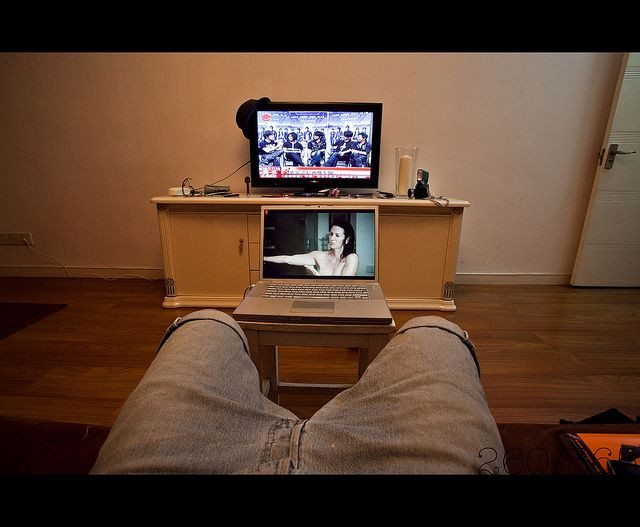Online TV Will Increase Your Choices, But Not Your Watching Time

No, you will not be spending more of your precious time watching TV once you can access all of your shows on the Internet, but you will be enjoying what you watch much more, suggests a new UT Dallas study.
“The Internet is soon going to fulfill its potential to become a giant on-demand repository of television shows (and movies),” wrote Dr. Stan Liebowitz, a professor of managerial economics, and Dr. Alejandro Zentner, an associate professor of managerial economics at UTD's Naveen Jindal School of Management.
To predict the future of your very own TV viewing habits, the team researchers looked back at a prior disruptive technology: cable TV.
Technical Disturbances
Cable and satellite transmission, the authors noted, provided a much larger number of channels than had been previously available, and many channels repeated their programming on different days or at different times in the hopes of gaining a bigger audience. Recording devices, such as the TiVo, also entered the viewing scene and allowed people to play a show at any time of day or night following its broadcast. More recently, cable systems began to provide on-demand services, which mean viewers can watch programs whenever they wish.
What happened, then, when cable and satellite disrupted the usual practice of watching television as it was broadcast (and only as it was broadcast)?
To answer this question, the researchers collected data from the years 1996 through 2008. They obtained information on the daily average number of minutes viewing, per capita, for 52 countries from Mediametrie–Eurodata TV Worldwide. Importantly, this company measures per capita viewing based on meters attached to television sets. Additionally, the researchers collected information on cable and satellite penetration from IHS Screen Digest. Crunching the numbers, the researchers factored in data on employment, income, cell phone use, and other variables.
Analyzing the results, the team found “increased variety brought about by cable and satellite has had virtually no impact on the amount of time devoted to television viewing.”
“Audiences in the countries with the least time spent viewing television watch about 2.5 hours per day whereas audiences in the highest viewing countries are in the vicinity of four hours per day,” wrote the authors.
Going forward, Liebowitz and Zentner predict more TV choices will mean most of us will be able to find shows we really like without spending more time watching. Their study suggests it’s the same as having a greater variety of available jeans; more options means better fit, not more consumption. Tell that to the woman with 10 pairs of jeans.
Source: Liebowitz SJ, Zentner A. The Internet as a celestial TiVo: What can we learn from cable television adoption? Journal of Cultural Economics. 2015.
Published by Medicaldaily.com



























